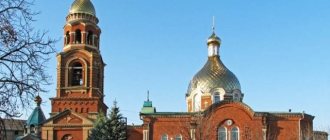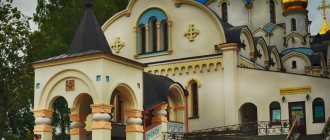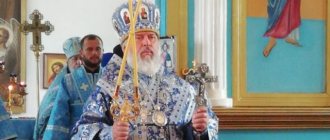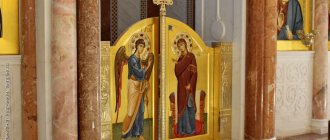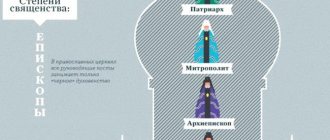The Greek (Hellenic) Orthodox Church is one of the most famous and respected Churches throughout the Orthodox world, which ranks third in terms of the number of members (more than 9 million people) after the Russian and Romanian Orthodox Churches. Over the course of its almost two-thousand-year existence, this local Church has given birth to many holy educators and martyrs, monks and pious laymen.
It was in the territory that is today under the control of the Greek Church that the apostles diligently preached. Among them is the Apostle Paul, who dedicated extensive messages to the Christian communities of certain regions of Greece, which are included in the list of books of the New Testament.
History of the emergence of the Greek (Helladic) Orthodox Church
Officially, the Greek Church is one of the youngest in the Orthodox world. But the history of Christianity in these lands goes back 2 thousand years.
Base
Orthodoxy was brought to the Greek lands by the Apostle Paul. Arriving on the Macedonian coast, the preacher addressed the Word of God to the residents of the cities of Kavala and Philippi. In the latter city, under the influence of the apostle’s preaching, the family of a wealthy city dweller, Lydia, was baptized. They were the first Christians on the European continent.
Saint Apostle Paul was the first missionary to Greek lands
Then the beloved disciple of Christ went south, where he converted the inhabitants of Athens, Thessaloniki and Corinth to the true Faith. He bordered these communities until the end of his earthly journey. Also, Christianity was spread in Greece by the apostles Luke, John the Theologian and Andrew the First-Called.
A century later, Christian communities spread throughout Greece. Until the 9th century. submitted to the authority of the Bishop of Rome. At the same time, from the middle of the millennium, the young Byzantine state began to influence the Peloponnese. Officially, the Greek dioceses became part of the Patriarchate of Constantinople. At the same time, the center of Orthodox monasticism was born on the island of Athos.
The Middle Ages were a testing time for the Greek Church. During the Early Middle Ages, Orthodoxy was persecuted by the Crusaders. From the middle of the 15th century. the entire territory of the Balkan Peninsula fell under the yoke of the Ottomans, who defeated the Byzantine Empire.
Important! For almost 400 years, Christians died at the hands of the Ottoman Muslims. At the same time, it was the clergy who made a lot of efforts to preserve Greek traditions, language and national identity. They led the popular resistance, which led to the overthrow of Ottoman rule and the formation of an independent Greek state.
Declaration of Independence
In 1833, on the initiative of the secular authorities, the autocephalous Greek Church was formed. The ruling monarch was proclaimed its head. This organization was not recognized by either the Ecumenical Patriarch or the Local Churches until 1850.
Over the next 100 years, the territory of the local church, as well as its internal traditions, took shape. The Second World War brought new challenges to the Greek clergy: a shortage of priests, a large number of destroyed churches. Under these conditions, the state government took upon itself the care of the Orthodox Church. The 1975 Constitution officially established the state status of Orthodoxy.
In addition to Christians, Muslims and Jews also live in Greece
The region of Western Thrace, in its northern region, is home to a Muslim Greek minority. His rights are recognized here. This is the only case in the country where the rights of a religious minority are recognized in the region of its traditional residence.
It is also one of the two recognized cultural and linguistic minorities of the Republic of Greece, along with the Armenians.
Synagogue in Thessaloniki, Greece. The synagogue in Thessaloniki dates back 2,500 years and is considered the oldest in Greece. Photo: upload.wikimedia.org
Today there are 140,000 Muslims living in this region. In general, the Greek government has historically been favorable to the rights of Muslims in this region of the country, but there are a number of unresolved problems in the field of culture and education.
This is due to the historical characteristics of this region and, first of all, to the legacy of the Ottoman Empire, which dominated Greece for a long time.
Thus, there is still the problem of the Pomak community, which Greece considers to be Turkified Greeks, and Bulgaria - Bulgarians.
Greece considers the Pomaks to be Turkified Greeks, and Bulgaria considers them to be Bulgarians.
In addition to Muslims, followers of Judaism also live in the country. Today there are nine active Jewish communities: in Athens, Thessaloniki, Larissa, Chalkis, Volos, Corfu, Trikala, Ioannina and Rhodes.
The total number of their parishioners is 5,000 people. The Athens community is the largest, but the community in Thessaloniki is more active and has an ancient (2500 years) history.
In three communities, services are regularly held in synagogues. And in Athens and Thessaloniki there are also Jewish schools. The main organization of Greek Jewry is the Central Council of Jewish Communities, better known by its Greek acronym KIS.
By leaving a comment, you accept the user agreement
Hierarchy of the Greek Orthodox Church
The church hierarchy is also enshrined in the main state document of Greece. In accordance with it, the main governing body of church institutions is the Holy Council, which consists of the heads of all Greek dioceses holding the rank of metropolitans.
Jerome II - Archbishop of Athens and All Greece
They are appointed by the government of the state. The meeting of bishops elects a head who receives the title of Archbishop of Athens and All Greece. The chosen clergyman must be approved by the head of state within 5 days, after which a solemn enthronement is scheduled.
On a permanent basis, church affairs are governed by the Holy Synod, consisting of the Archbishop of Athens and 12 metropolitans. They occupy the post on a shift basis.
The modern Greek Church consists of 81 dioceses. It is believed that 30 of them are under the jurisdiction of the Ecumenical Patriarch. It should be noted that the territories of the islands of Crete, Dodecanese and Athos, which politically belong to Greece, are under the direct control of the ruler of Constantinople.
Interesting! The division into ancestral and new lands is reflected in the composition of the Holy Synod. 6 out of 12 metropolitans represent dioceses belonging to the jurisdiction of Constantinople.
Holy Mount Athos - living Byzantium
Athos is a particularly revered place throughout the Orthodox world. This Holy Mountain is the earthly inheritance of the Blessed Virgin Mary. Everything here, even the air and stones, is saturated with the grace of the Holy Spirit. There is no other place on earth where the Byzantine tradition is preserved in such purity as on Mount Athos. This is a place of prayerful feat of thousands of Orthodox devotees; prayer here does not stop for a minute.
According to legend, together with the Apostle John, the Mother of God sailed to Cyprus to visit Lazarus the Four-Days, who by that time was already the bishop of Crete. But suddenly a storm arose and carried the ship to the shore, to the foot of Mount Athos. Local residents warmly welcomed the Holy Guest. She blessed this place, calling it her lot. And she promised to take care of him and intercede for him before the Son until the end of the century. She also warned that no woman should dare to set foot on Mount Athos.
It must be said that not only on Athos, but also in many other Greek monasteries, the ancient Byzantine rule is observed about the prohibition of women entering male monasteries and vice versa, with the exception of persons of clergy. The preservation of this rule on Mount Athos was one of the conditions put forward by Greece when the country joined the European Union. Attempts by some EU leaders to lift this ban were unsuccessful due to the administrative status of the monastic republic.
Administratively, the Holy Mountain is an autonomous self-governing community of 20 Orthodox monasteries. The central council body of the monastic republic is the Holy Kinot. The Charter of the Holy Mountain has the force of state law. The status of Mount Athos is enshrined in the Greek Constitution. The civil authority on the Holy Mountain is represented by the governor. Its powers are to monitor compliance with civil legislation.
Differences between Greek Orthodoxy and Russian
The Russian and Greek people are co-religionists. Orthodoxy in Russia and Greece have common dogmatic foundations and service canons. Minor differences lie in the external ritual attributes of the Faith.
Priesthood status
Russian tradition distinguishes ministers of the Church into a special class. Often they distance themselves from ordinary lay people, communicating with them only within church walls. At the same time, the attitude towards clergy in Russian Orthodoxy is characterized by some indifference. Priests and monks in Greece are closer to the common people, being part of them.
Orthodoxy is the official religion in Greece
You can approach them on the street and ask for a blessing. Often after the service, the priest and parishioners sit down at a common table and have tea. At the same time, the Greek servants of the Lord, regardless of age, enjoy universal respect. Even a young man in a cassock will be given a seat in a transport, or a blessing will be asked on the street.
Robes and external attributes
The vestments of Russian priests are distinguished by splendor and richness. Depending on the service, clothes of different colors are used. Greek clothes are characterized by minimalism and laconicism. On special occasions, white robes are used.
The cross in the Russian tradition is an indicator of the status of a clergyman. In accordance with this, the appearance of this Christian symbol differs. For Greek clergy, the cross is a reward for diligent service. It is not worn in everyday life, being worn only for bishop's services.
The opposite situation occurs with the headdress - kamilavka. The Greek headdress is a part of the everyday vestment of a priest. It is produced only in black and has an extension at the top. Kamilavka in Russia is a reward. It is a cylinder-shaped headdress, the color of which depends on the type of service.
Service traditions
Worship in Greece lasts 1-1.5 hours. Most of the service is held with the Royal Doors open in full view of the parishioners. Greeks try to take communion weekly. The lowest church dignitaries, deacons, have the right to receive communion. At the same time, the laity undergo the sacrament of confession 3-4 times a year.
The Bible in the Greek Church differs in the composition of its books from the Church Slavonic
The procession of the cross in the Greek Orthodox tradition is accompanied by the sounds of a brass band. He walks through the streets to the central square of the settlement, where a solemn prayer service is being held. The holiday ends with folk festivities and fireworks.
Temple structure
© Puk Patrick / unsplash.com / CC BY 2.0
The ancient Greek temple was not built for people. Its purpose is to become the earthly abode of the gods. The architecture and the very structure of the Greek temple were subordinated to this plan.
Inside there were one or more statues and a shrine. The main sacrifices at the temples of Greece were performed on a special platform in front of the building. There was an altar here and people gathered.
The types of temples varied from modest sanctuaries to majestic buildings. The early version was a rectangular building with a fireplace in the middle. A similar layout formed the basis for subsequent structures. In the depths of the hall towered huge statues of Greek gods, decorated with paintings and jewelry. In the central part there was a sanctuary with religious objects. Characterized by the absence of windows, the use of matte monochromatic colors and gold plating indoors.
Classic style, strict design, grace - this is a brief description of the architecture of ancient times. The structure is supported by massive columns. The top of the colonnade is crowned by a triangular pediment, thanks to which the façade looks slender and majestic. Excesses were not welcomed; strict asceticism was violated by individual elements - statues with the faces of kings, gold jewelry, and exquisite ornaments. It was a synthesis of sculpture and architecture with simple forms, graceful lines
Look for interesting excursions in specially trained search engines:
- Tripster - unusual excursions from locals.
- Sputnik - inexpensive group excursions.
Only Russian-speaking guides.
Temple of Olympian Zeus
© chriskaridis / unsplash.com / CC BY 2.0
Ancient temples of Greece show off in photos and guidebooks. The most famous of them was erected in the center of Athens, on Mount Olympus. Local residents wanted the Thunderer himself to watch the sporting events. This is how the Temple of Zeus at Olympia was conceived, which took more than 600 years to build.
The ancient sculptor Phidias carved the figure of Zeus from wood and covered it with pink ivory, so the body seemed alive. Earthquakes and wars did not spare this beautiful creation. Majestic 17-meter columns and ruins are all that remains today of the Temple of Olympian Zeus.
Temple of Poseidon
On the southern cape of the Aegean Sea, the Greeks erected a temple to Poseidon in the hope that the mighty sea ruler would be merciful to fishermen and sailors. Plato left a description of the temple. He claimed that the walls and ceilings were decorated with ivory, gold and silver plates. There were golden statues around the perimeter, and Poseidon himself sat on a huge chariot, surrounded by dolphins and nymphs.
The building stood for several centuries. Time has preserved the slender colonnade with a ceiling, where scenes of battles are depicted.
Erechtheion
© chriskaridis / unsplash.com / CC BY 2.0
At the end of the Golden Age of Hellas, the last of the great temples of the Athenian Acropolis, the Erechtheion, was created. According to legend, a dispute between the goddess Athena and Poseidon took place here. In order to possess Atika, the sea king pierced a rock with a trident, where there was a source of salt water. Athena grew an olive tree. The gift of the Greek goddess pleased the Hellenes, and she was recognized as the patroness of Athens.
The roof of the building above the southern porch was supported by 6 marble caryatids. One of them was taken to Britain, the rest are kept in the Acropolis Museum. Instead, there are copies installed in the open air.
Look for last-minute tours in the Onlinetours and Travelata search engines. Using these sites, you can instantly compare offers from more than 120 tour operators . Read on for the secrets of finding the best deals on vacation packages.
Temple of Apollo
For the ancient Greeks, Delphi was the center of the inhabited world, and the Delphic Temple had a special purpose - fortune telling. Not a single state matter was completed without the advice of an oracle. The Temple of Apollo at Delphi was located at the foot of Mount Parnassus. The path to it passed by beautiful statues and a treasury where gifts accumulated over many centuries were kept. In front of the wall, people were greeted by a statue of a sphinx.
The temple was rebuilt more than once, one dilapidated building was replaced by another.
In the 6th century, the Byzantine monastery of Daphne was founded on the site of the sanctuary.
Temple of Hephaestus
© martinpilat / flickr.com / CC BY 2.0
The image of the Temple of Hephaestus is familiar to us from the photo. The building has been perfectly preserved, although the bronze statues, mosaics and frescoes have not stood the test of time and wars.
Blacksmith and pottery workshops were found in the surrounding area. Craftsmen tried to settle closer to their patron.
In the 7th century, when Greece lost its former power, the building was chosen by Christians. In our time, the Temple of Hephaestus has become the largest open-air museum.
Parthenon
The most beautiful creation of Greek builders was the Temple of the Virgin Athena - the Parthenon. The architecture retains all the features of the ancient style. The building is surrounded by 50 columns and rests on a 3-step base. The bas-relief above the colonnade, 160 m long, has been preserved.
The temple was revered even after the decline of Athens. At different times, the building served Christians, Muslims, and survived fires and wars. Today the temple is included in the list of specially protected sites and is under the protection of UNESCO.
Temple of Nike Apteros
© dnwinterburn / flickr.com / CC BY 2.0
The Temple of Nike the Wingless was originally dedicated to Athena the Victorious. The building and statue were erected in 427 BC, when wars continued in the Peloponnese peninsula.
According to one version, the Goddess of Victory was deprived of her wings so that she could not leave the city. But historians believe that the ancient Pausanias made a mistake when describing the temple. He was confused by Athena's unconventional attire without a helmet or weapons. When the mistake was discovered, they came up with a beautiful legend and left a double name.
Helpful advice
Save on housing by renting an apartment from a local on Airbnb. Get 2100 rub. as a gift for your first booking.
Temple of Hera
Olympia is home to one of the most ancient buildings in Corfu - the Temple of Hera. Scientific chronicles claim that the building was built in 1096 BC. The temple was rebuilt several times. According to archaeologists, the latest changes date back to 600 AD. e. In the 6th century, a strong earthquake completely destroyed the building, and it was never restored.
Today, only the stone base and the lower part of the columns have survived. In the place where the altar for sacrifices was once located, today the sacred Olympic flame is lit.
Look for good hotels on
Hotellook - the site compares prices of a variety of booking systems (Booking too) and finds the best one. Read our instructions on how to find a good and inexpensive hotel on your own.
Russia and the Greek Church: history of relationships
The Russian and Greek Churches are closely connected with each other. Their relationship went through several stages.
- At the initial stage, the Greek Church played the role of a guide to the Christian world for the Russian lands. She contributed to the formation of a state on the territory of the Eastern Slavs. The first leaders of the Russian Church were of Greek origin.
- The situation changed after the conquest of Byzantium by the Ottomans. Russia by this time had strengthened its position and began to provide patronage to the Greek clergy. In the XVII-XVIII centuries. More often than not, financial support was refused. By the end of the 18th century, Russia was providing active military assistance to the national liberation movement in the Balkan countries.
- Today, the relations of co-religionists are strongly influenced by the global political situation. The schism began in 2021, after a split broke relations between the Russian Orthodox Church and the Patriarchate of Constantinople, which has a strong influence on the Greek Church. In this regard, Russian priests are prohibited from holding joint services with the Greek clergy.
Literature[ | ]
- Greek Orthodox Church / Petrunina O. E. // Sherwood - Yaya [Electronic resource]. - 2021. - P. 352. - (Big Russian Encyclopedia: [in 35 volumes] / chief editor Yu. S. Osipov; 2004-2017, vol. 35). — ISBN 978-5-85270-373-6.
- Greek Orthodox Church // Religion: Encyclopedia / Comp. and general ed. A. A. Gritsanov, G. V. Sinilo. - Mn.: Book House, 2007. - 960 p. - (World of Encyclopedias).
- Greek Orthodox Church // Skurat K. E.
History of the Orthodox Local Churches: In 2 volumes - M.: Russian Lights, ANS, 1994. - Sokolov I. I.
Greek (Helladic) Church // Orthodox Theological Encyclopedia. - SPb.: Publishing house. Petrograd. Adj. to spiritual journal. “The Wanderer”, 1903. - T. 4. - Hellenic (Greek) Orthodox Church // Christianity: Dictionary / Under the general. ed. L. N. Mitrokhina. - M.: Republic, 1994. - P. 540. - 559 p. — 50,000 copies. — ISBN 5-250-02302-9.
- Vailhé S. (French)Russian "Greek Church." // The Catholic Encyclopedia. Vol. 6. New York: Robert Appleton Company, 1909.
